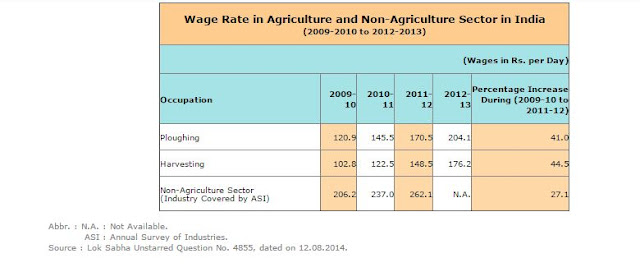Electoral Politics: The Changes in Post-Modi Era.
2014 Loksabha election has made a tremendous impact on Indian Politics. The rise of Narendra Modi has changed the political equation at national as well as sub-national level. In this article, I will try to understand the changes in the voting pattern by constructing the indicators.
The main change which is being witnessed is that India is moving towards new hegemony in Indian Politics (Palshikar (2018). This is contradictory to the political movement of the Indian democracy, Before 2014, Indian democracy was moving towards convergence from hegemony which means that in political competition the dominance of the single dominated players gets reduced (Palshikar and Yadav (2003)). This is also getting reflected in the voter's behavior where voters are looking for single dominated party and dominated leader.
To understand the changes in the voting pattern, I have constructed Gallagher’s index given by Gallagher (1991) and Effective Number of Political Parties developed by Laakso and Taagepera (1979) for two election period i.e. pre-Modi and post-Modi.
Interestingly, the pooled data trend between ENP and Gallagher’s index shows a negative relationship.
The author calculated ENP and Gallagher Index based on the assembly election result form Election commission of India.
This means when the political competition gets reduced i.e. political concentration is increased, the gap between voting share and seat share gets increased. It means that if fewer parties are forming the government, the gap between vote share and seat share gets increased. Parties managed to win the seats with fewer vote shares or some parties even have more vote shares but can’t manage to win the seats. That can be seen in states like UP, MP.
1. The previous government was formed by BJP (NDA) and the new government is by a different party.
The author calculated ENP and Gallagher Index based on the assembly election result form Election commission of India.
Except for Punjab and Chattisgarh, Gallagher index is reduced in the post-Modi era and ENP is increased in the post-Modi era.
In the new period, the non-BJP party ruling the BJP ruled state is weak and has less dominance. But interestingly, the gap between vote share and seat share is declined. This is not true for Punjab might be because of the strong anti-incumbency similarly for Chattisgarh.
2. The previous government was formed by BJP (NDA) and the new government is BJP (NDA).
The author calculated ENP and Gallagher Index based on the assembly election result form Election commission of India.
Interestingly both states are known as BJP's stronghold. But ENP is increased in the post-Modi era. This might be because of the anti-incumbency. But Gallagher index is reduced. So parties are managed to win more seats with small vote share or some parties have vote share but are unable to win the seats.
3. The previous government was formed by other and new government is BJP (NDA).
The author calculated ENP and Gallagher Index based on the assembly election result form Election commission of India.
Now this result is very interesting and has some interesting findings. In all given states, ENP is reduced and Gallagher index is increased. When BJP comes in the power where other parties were ruling the states, BJP became more dominated player and managed to win seats with minimum required vote share. The increased Gallagher index shows that in such state, the gap between seat share and vote share is increased which means are some parties or individuals who have vote share but couldn't manage to win the seat. This can be a strategy of winning the seat by promoting many other independent candidates to attract potential anti-BJP voters who are influenced by anti-incumbency but don't want to vote for BJP.
4. The previous government was formed by other and new government is by others
The author calculated ENP and Gallagher Index based on the assembly election result form Election commission of India.
In these states, there is no such pattern as BJP is not a traditionally dominated player in these parties. Andhra Pradesh has shown the visible change in the 2019 election due to Y. S. Jaganmohan Reddy's, YSR Congress.
Concluding marks:
The first thing is that the graph between ENP and Gallagher is negatively sloped. The declining ENP witnessed the increase in the Gallagher Index. This means when one party is becoming the dominant player in a given state, that dominance is coming from bundling more seats, not from more vote shares.
In states where BJP wasn't in power but now in power, the dominance of the party governing the state is increasing and that is from bundling more seats.
BJP comes in power with dominance and that states show the movement towards political hegemony. Upcoming elections will show more interesting trends,
References:
Gallagher, M. (1991). Proportionality, disproportionality, and electoral systems. Electoral Studies, 10(1), 33-51.
Laakso, M., & Taagepera, R. (1979). “Effective” number of parties: a measure with application to West Europe. Comparative political studies, 12(1), 3-27.
Palshikar, S. (2018). Maharashtra: Towards Hegemony, BJP beyond Electoral Dominance. Economic and Political Weekly.
Palshikar, S., & Yadav, Y. (2003). From hegemony to convergence: Party system and electoral politics in the Indian states, 1952-2002. Journal of Indian Institute of Political Economy, 15(1/2), 5-44.










.jpeg)


टिप्पण्या
टिप्पणी पोस्ट करा